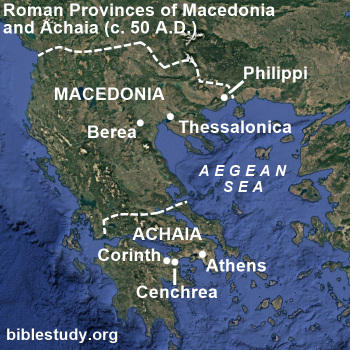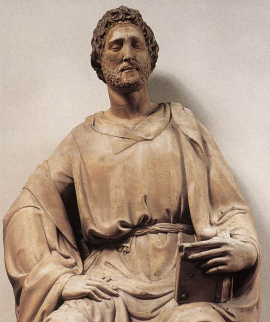Who Traveled with Paul?
The Early Journeys!
Third Missionary Journey Begins
Paul's third evangelistic journey ran from the summer of 53 A.D. to near Pentecost (May 21) in 58 A.D. It would prove to be his longest, both in terms of time and distance traveled, he had undertaken so far. It would also end up involving the most Christian companions, more than eleven, of any travel he would take during his long ministry.
Travelers from the Start
Paul began his third missionary journey from Syrian Antioch (Acts 18:22). The New Testament unfortunately does not reveal, at the start of his travel, who accompanied him. It merely offers a brief verse denoting the places he first visited.
And when he had stayed there some time (in Syrian Antioch), he left and went through the country of the Galatians and the Phrygians in order, establishing all the disciples (Acts 18:23, HBFV throughout).
The first Biblical mention of Christians related to this journey does not take place until Paul arrives in Ephesus. Timothy, the apostle's close friend, and a man named Erastus, are mentioned as being in the city and sent ahead into Macedonia (Acts 19:22). These two men were highly likely in Ephesus because they had traveled with Paul since the start of the campaign (Life and Epistles of Paul, chapter 14, page 362).
Gaius of Derbe and Aristarchus from Thessalonica (see Acts 20:4) were additionally in Ephesus. The Bible refers to them, when the city's pagans formed a mob against the gospel, as "fellow travelers of Paul" (Acts 19:29). They, like Timothy and Erastus, highly likely came to the city by accompanying the apostle from the start of his journey.
Titus, who had traveled with Paul to the Jerusalem conference (Galatians 2:1), was also likely part of his entourage from Antioch.
In Ephesus
Paul, while in Ephesus, plans to visit Macedonia and Achaia (Acts 19:21). He therefore sends, in preparation of visiting the churches in these provinces, both Timothy and Erastus ahead of him (Acts 19:22, 1Corinthians 4:17). He informs the Corinthians, however, that there is a possibility the two men will not be able to successfully complete their travel.

Now IF Timothy comes, see to it that he may be with you without fear; for he labors in the work of the Lord, even as I do (1Corinthians 16:10).
It is likely, though not certain, that Paul sent Titus (and an unknown person, 2Corinthians 12:18) from Ephesus to Corinth to deliver the book of 1Corinthians (Life and Epistles of Paul, chapter 15, page 418). If Titus was not the courier of 1Corinthians then he was sent to Corinth shortly after the first letter was sent. Paul, in either case, planned to meet him in Troas to discuss the response to his letter (2Corinthians 2:12 - 13).
Travel to Troas
The Apostle Paul, in the summer of 57 A.D., leaves Ephesus for Troas. Traveling with him are Aristarchus, Tychicus and Trophimus (both from Asia), Sopater (a Berean), Secundus (from Thessalonica) and Gaius from Derbe (Acts 20:1, Life and Epistles of Paul, chapter 20, page 542).
Paul's inability to find Titus in Troas brought with it both sadness and disappointment. He decides to lead his group to leave the city and travel west to Philippi.
Now when I came to Troas to preach the gospel of Christ, and a door was opened to me by the Lord, I had no rest in my spirit because I was not able to find Titus, my brother . . . (2Corinthians 2:13).
A Reunion in Philippi
Paul, while in Philippi, writes the book of 2Corinthians. In it he mentions finally finding Titus in the city (2Corinthians 7:6, see also 13:14 subscription). He also runs into both Luke and Timothy. Luke had been living in Philippi since the last time Paul saw him during his second missionary journey (Acts 17:1, 2Corinthians 13:14 subscription). Luke will continue to stay in the city until Paul and his team return to Philippi on their way eastward to Troas and Asia.

Timothy was in Philippi (2Corinthians 1:1) as he apparently never made it to Corinth (Acts 19:22) from Ephesus (St. Paul the Traveller and the Roman Citizen, chapter 12). It is unknown what happened to Timothy's traveling companion Erastus.
To Corinth and Back
Paul and company, which now includes Timothy (Acts 20:4, Romans 16:21), travel westward from Philippi and then south to Corinth. They stay only three months in the city and then return north to Macedonia.
The Feast in Philippi
Paul and his team, now back in Macedonia, travel east to Philippi. They connect, yet again, with Luke who will accompany the apostle all the way to Jerusalem. We can be fairly certain Luke rejoined the apostle in Philippi due to the Biblical language he used. In Acts 20:5 - 6 he uses the words "us" and "we" in a subtle reference to himself. This is the first time he does this since the start of the third missionary journey in Acts 18:22.
Acts 20:5 - 6 also tells us that Paul and Luke stayed in Philippi to keep the Passover and Feast of Unleavened Bread while the remainder of team was sent to Troas.
These (the men who traveled with Paul, verse 4) went on ahead and waited for US in Troas. But WE sailed away from Philippi after the Days of Unleavened Bread; and in five days WE came to them at Troas, where WE stayed for seven days (Acts 20:5 - 6).
Journey to Troas
The Days of Unleavened Bread, in 58 A.D., ended at sunset on April 3 (Monday). Paul and Luke leave Philippi the next day and arrive at Troas on April 8 (five days inclusive, Acts 20:6). The two men then meet up with the group sent ahead of them and together they stay in the city seven days (Sunday April 9 to Saturday April 15).
Paul, after an eventful last meeting with brethren in Troas (Acts 20:7 - 12), leaves the city early on April 16. He decides, however, to send those traveling with him to Assos by boat while he walks to the port (Acts 20:13). All the men meet up in Assos and together get on a ship sailing south. The apostle's goal is to be in Jerusalem to observe Pentecost which falls on May 21 (Acts 20:16).
Leaving the Team
Most of Paul's traveling companions accompanied him "as far as Asia" (Acts 20:4). After boarding a ship in Assos, the only stop that allowed some of his companions to leave was in Miletus. The stopover in Miletus was long enough to allow the apostle to request Ephesian elders to meet him (Acts 20:17).
After Miletus it is likely only Timothy, Luke, Trophimus (Acts 21:29) and possibly one or two others who continued to travel to Tyre with the apostle (Life and Epistles of Paul, chapter 20, page 542).
Caesarea to Jerusalem
Paul and his group travel from Tyre to Ptolemais to Caesarea. It is in Caesarea where they stay with Philip the evangelist (Acts 21:8). They then leave with a man named Mnason, and some brethren from Caesarea, to walk the remaining distance to Jerusalem.
And some of the disciples from Caesarea also went with us, and brought a certain Mnason, a Cypriot, an old disciple with whom we might lodge (Acts 21:16).
The Fourth Journey
Paul, shortly after his third missionary journey ends, is arrested in Jerusalem and becomes a Roman prisoner in Caesarea. His imprisonment lasts until early of Autumn 60 A.D. when he is sent to Rome to have his case heard by Caesar. He is accompanied on his travels by Aristarchus and Luke (Life and Epistles of Paul, chapter 23, page 632).
Now when it was decided that we should sail to Italy, they delivered up Paul and certain other prisoners to a centurion named Julius, who was of the band of Augustus.
And after boarding a ship of Adramyttium that was about to pass by the coasts of Asia, we set sail; and Aristarchus, a Macedonian of Thessalonica, was with us (Acts 27:1 - 2).
Both Aristarchus and Luke were Paul's traveling companions all the way to Rome.
Fifth and Final Trip
In the spring of 63 A.D. Paul is acquitted of all charges against him and released from being a prisoner in Rome. He immediately, by himself, sets sail to the island of Crete where he meets Titus (Titus 1:5). He afterwards, likely still alone, sails to Nicopolis in Macedonia (3:12).
Paul likely also traveled alone to preach the gospel in Spain (Romans 15:24, 28, see also Life and Epistles of Paul, chapter 27) and possibly even in Britain. He is arrested for the last time in the early part of 68 A.D. and taken back to Rome where he will die around May or June.
Who Were They?
Who traveled with the Apostle Paul on his last journeys? This group of companions included Aristarchus, Erastus, Gaius, Luke, Mnason, Secundus, Sopater, Timothy, Titus, Trophimus and Tychicus. There were also an unknown number of unnamed brethren who went with him from Caesarea to Jerusalem during his third journey (Acts 21:16). Still others may have traveled with Paul who are not mentioned in the Bible.